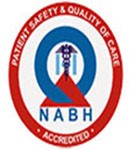Glaucoma
- Home
- Glaucoma
Glaucoma is the second leading cause of irreversible blindness worldwide. Glaucoma has been called the “silent thief of sight” as it has no apparent symptoms.
What is Glaucoma ?
Glaucoma is the name given to a group of eye diseases where vision is lost due to damage to the optic nerve. Glaucoma has been called the “silent thief of sight,” because the most common type, primary open-angle glaucoma, has no symptoms until it reaches an advanced stage when vision loss becomes apparent.
Without treatment, people with glaucoma slowly lose their peripheral (side) vision until they seem to be looking through a tunnel. Over time, central vision may worsen until no vision remains. Anyone with risk factors for glaucoma should have regular comprehensive eye examinations by an eye care professional.

There is no particular reason for glaucoma. But is affected by many factors. The most significant one the intraocular eye pressure. Our eyes produce a fluid called aqueous humor for nourishing the eyes. This liquid flows through the pupil to the front of the eye. In a healthy eye, the fluid leaves through a drainage canal located between the iris and cornea.
But if you have glaucoma, the drainage canals become blocked with microscopic deposits. The fluid with its natural drainage blocked builds up in the eye. This excess fluid puts pressure on the eye. If untreated, this elevated eye pressure can damage the optic nerve.
- People Over 60
- Family Members with Glaucoma
- Steroid Users
- Eye Injury
Other possible risk factors include
- High myopia (nearsightedness)
- Hypertension
Closed-angle glaucoma has more severe symptoms that tend to come on suddenly.
In both types of glaucoma, the symptoms can be:
- Eye pain or pressure.
- Headaches.
- Rainbow-colored halos around lights.
- Low vision, blurred vision, narrowed vision (tunnel vision) or blind spots.
- Nausea and vomiting.
- Red eyes.
Glaucoma is a lifelong eye ailment that can lead to vision loss if not detected in time and managed well. Glaucoma does not necessarily lead to blindness. It can be managed with modern treatment. Treatment cannot restore lost vision, however, it can be prevented from further loss.
The treatment largely depends on the stage of glaucoma. Treatment can be divided in 3 sections – medications (eye drops), laser treatment and surgery. Eye drops are very effective in the initial stages and more than one drop is often required to effectively achieve the ideal ‘target pressure’ which is determined by your ophthalmologist. The limitations with eye drop therapy are side effects, difficulty with compliance to regularly use drops over long periods of time and loss of effectiveness over time. Selective laser trabeculoplasty (SLT) is considered when eye drops are either inadequate or at an earlier stage on the advice of your ophthalmologist. Trabeculectomy filtration surgery is considered when the other treatment modalities have become ineffective.
While glaucoma has no cure but with treatment eye pressure can be kept under control and prevent vision loss. If you are at risk, an eye examination can detect the ailment early. Ask your doctor, how often you require screening.
If you have been prescribed eyedrops, it is important to use it as prescribed. With proper care, you can keep glaucoma from worsening and causing irreversible vision loss or blindness.

Types of Glaucoma
our services
Treatment Types
- Open-angle glaucoma
- Angle-closure glaucoma
- Secondary Glaucoma
For diagnosis and treatment of glaucoma, we have an experienced team of specialists and the latest technology
- Humphrey Filed Analyser
- Optical Coherence Tomography
- Stereoscopic Disc Photography
- Perkins Tonometer
- Ultra Sound Bio-microscopy
- Nd:YAG Laser
- Diode Laser












 Smt. K. Mani Mala is a postgraduate holding an MBA. She started her career as a founder faculty of one of the first management colleges in Visakhapatnam, viz. Indian Institute of Advanced Management. She worked with East India Petroleum Limited as its first employee and as Executive Assistant to the Managing Director. She was also associated in establishing the Joint Venture with M/s SHV Energy of Netherlands as General Manager (MIS). During her tenure she was also associated with other group companies such as 16 MW & 450 MW gas-based power projects in AP and 16 MW & 100 MW hydel power plants in Himachal Pradesh.
Smt. K. Mani Mala is a postgraduate holding an MBA. She started her career as a founder faculty of one of the first management colleges in Visakhapatnam, viz. Indian Institute of Advanced Management. She worked with East India Petroleum Limited as its first employee and as Executive Assistant to the Managing Director. She was also associated in establishing the Joint Venture with M/s SHV Energy of Netherlands as General Manager (MIS). During her tenure she was also associated with other group companies such as 16 MW & 450 MW gas-based power projects in AP and 16 MW & 100 MW hydel power plants in Himachal Pradesh.
 ( Late) Dr. Kumar studied Law and Economics at the Andhra University, Visakhapatnam and Chennai. He was a Chartered Accountant of repute with offices in Visakhapatnam, Hyderabad and Chennai.
( Late) Dr. Kumar studied Law and Economics at the Andhra University, Visakhapatnam and Chennai. He was a Chartered Accountant of repute with offices in Visakhapatnam, Hyderabad and Chennai.